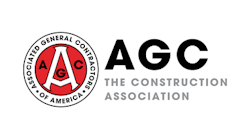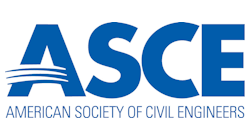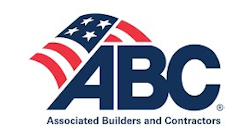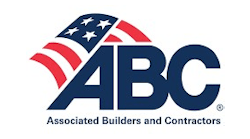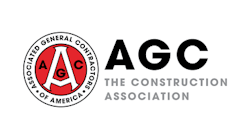“Nighttime is the only time to do work with minimal disruption to traffic,” says Dennis Huckaba, policy engineer in design and development with the Illinois Department of Transportation (IDOT), as he predicts the advent of more night work on roadways.
Because IDOT anticipates so much nighttime construction, it sponsored a research project in 2001 (“Nighttime Construction: Evaluation of Lighting for Highway Construction Operations in Illinois”) to evaluate lighting requirements. The study resulted in the development of lighting specifications along the lines of OSHA recommendations for levels 1, 2, and 3.
Due to complaints about insufficient lighting remedied by the addition of light towers, which led to increased glare, the Illinois Center for Transportation-a research partnership between IDOT and the University of Illinois-conducted another research project five years later (“Nighttime Construction: Evaluation of Lighting Glare for Highway Construction in Illinois”). Over the course of 18 months, researchers found that some work locations relied on equipment and truck headlights and makeshift lighting that typically created blinding glare for workers and motorists. The result of that study was the implementation of new specifications. Previous nighttime specifications were burdensome, Huckaba believes. The new standard has been used a few times now and is included on all future IDOT contracts.
Because measuring glare was difficult and variables so numerous, a definitive calculation for measuring it could not be achieved. The alternative was to authorize specific types of lighting and their usage. Lighting levels are specified for work areas and traffic control removal and setup. To reduce glare, light towers must aim the luminaries down at the work, rotated outward no more than 30 degrees from straight down to reduce unwanted glare. Headlights are not permitted within the work zone (except for specific operations) and are never to be used when facing oncoming traffic. Balloon lighting can be used with few restrictions.
Up and Away
IDOT’s special provision for nighttime lighting includes specific requirements for designated construction operations. “We do a lot of paving at night,” Huckaba says, “because we’re required to make sure no traffic queue is longer than 2 miles. To mitigate congestion, we work at night.” For milling and paving, the specs call for one balloon light on each piece of mobile machinery used in the work zone, exclusive of vehicles used to transport materials and personnel. “We first looked at balloon lighting five or six years ago,” Huckaba recalls. “Everyone has used power plants that blind people. But Powermoon is different. Their balloons work like an umbrella that holds the light open; it’s not just a floodlight stuck on a light tower.”
Huckaba is referring to Powermoon Enterprises Ltd.’s patented umbrella-like, steel-spring system, used in place of gas- or air-pressure-filled systems that can accidentally deflate. Lightweight, compact, and wind-resistant up to 70 miles per hour, the lights are also easy to install and can be ready to use within 20 seconds in any environment. Four 1,000-watt Profi-1 lights, weighing 18 pounds each, easily fit in the trunk of a car and can illuminate a football field or a 200-yard-long road.
They cost about $800 apiece. Dennis Mooney, paving and milling superintendent for Fort Myers Construction, says they’re worth the money. He recently bought the “latest balloons applicable for a Volvo PF6110 tracked paver, the biggest track paver they make” and has used them on several jobs, such as paving McDill Road, which he says had no lights, and Canal Road in Washington, DC. At Boeing Air Force Base in Washington, DC, the road was shut down on a Friday night, milled and paved with 1,300 tons of asphalt, then opened back up by Saturday morning.
Similarly, on East Drive in Alexandria, VA, crews worked at night. When more than 400,000 tons of asphalt has to be moved on a four-year job, working at night is more than just a convenience: It’s efficiency born of necessity. “Day traffic was so bad,” Mooney remembers, “we couldn’t get asphalt to the job in a timely manner. The key is to keep the paver walking.”
In business since 1975, Fort Myers Construction is the biggest paving contractor in DC. The full-service company that also does concrete and pipe runs five milling and five paving crews, with one patch crew. “We have at least five pavers and six mill crews on the street,” Mooney estimates. “We own nine pavers-three spare-and eight milling machines. One is a 12.5-inch CMI micro mill drum for the beltway.”
Mooney’s boss, Jake Zeiders, decided on Powermoon balloon lights for the company. “The lights don’t blind traffic or the crews,” Mooney says. “They produce few shadows compared to fluorescents. They’re not harsh.” He says the new lights purchased for the Volvo paver illuminate a 50-foot radius without shadows. He acknowledges that the initial setup is expensive and that they need to be taken care of, but says maintenance is easy and the lights have a quick return on investment. “We bought a 4410 Blaw-Knox paver when it first came out two years ago. This year, when we bought a new paver, we got new lights. Two lights mount on the back of the machine. They tripled the brightness for an extra $200 and paid for themselves in four months the way we use them.”
Maintenance consists of proper storage, Mooney states. “We keep them in the tubes they came in, 5 feet tall by 18 inches wide.” They’re lightweight and easily set up by one person. “It takes a mechanic 15 minutes to install; they’re easier to set up than the old ones.”
One often-overlooked benefit is that they cut back on noise, which can be critical on some contracts. But the greatest advantage is that the glare-free portable lights produce fewer shadows, improving work efficiency and cutting down on labor costs. “The roller men can see behind them,” Mooney says. “Before these, we had to tow two pickups with two light towers in a moving operation that would ride beside the paver; now, we don’t need that. We save the cost of two pickups, two towers, and two people.” That has allowed them to run an echelon of four side-by-side pavers to produce a road with no seam.
Nightlights
Efficiency is important, but there’s no substitute for safety. That’s why Tim Collins, sales manager for Coastal Traffic Systems in Costa Mesa, CA, says he “wouldn’t work with any other light than the nonglare Airstar balloon. It’s a safety issue; you don’t want to blind a driver.”
With 22 years in the business, Collins says he used the typical can light towers for road closures when he started. “You put a battery and light inside a cone to illuminate the road,” he says. But there were drawbacks. “Before, you couldn’t see the guys around the paver. You had to put towers along a 5-mile stretch of highway. If it takes three hours to make one pass, you need 10 towers, which are running for no reason while you’re at the other end.” But, with user-friendly balloon lights from the Fort Worth, TX-based Airstar America Inc., “One light tower equals 10 vehicles. That saves fuel costs and pollution.”
More importantly now, Collins says, you can “see everything. You can see pavement markings and distinguish people. That’s a big safety issue.” He explains that because their primary service is for “Edison” and that they’re on-call 24-and-seven if a pole is hit, crews are often working at night. “If we have to close a road or reduce a two-lane into one, we use the nonglare light, because it’s not as harsh. Some states mandate nonglare lights at night. It doesn’t blind drivers or workers, but it illuminates the same square footage.”
Not only are the areas lit; they are illuminated with a better light, he contends. “It’s like daylight. You see the full spectrum of color.” Collins estimates that labor is up to 20% quicker because of better lighting.
Better visibility is combined with less noise for a winning combination, and construction crews aren’t the only ones to benefit. Collins says the police who man ID checkpoints in Anaheim are quite appreciative. Thanks to the ultraquiet generator (72 decibels) running next to the officer checking IDs, he can hear the conversation in the car and see the vehicles.
Collins says Coastal Traffic Systems purchased the lights for emergency work and to rent to contractors. They can be put on or taken off quickly and use the same mounting point on the paving machines that umbrellas use. “You use the umbrellas during the day and the lights at night.” When he demonstrated that to a contractor, the customer bought the lights on sight. “It was one of our first sales.”
“We use the 2000-watt Sirocco 95% of the time,” Collins continues. “It’s the flagship of Airstar.” He lists several advantages: They provide a crisper light-no yellow haze; they are cool to the touch and don’t give off heat; they can be used in rain or snow; they’ll kill the power if they’re knocked over, so there’s no risk of starting a fire in dry areas; and they’re portable, nonglare, and not so tall that they take out power lines. With truck-mounted lights, “you can drive up to 20 miles per hour and only have to go 18 feet in the air. You can articulate the head at 6 feet to get light. With a light tower, it’s a minimum of 28 feet.” Light towers also take 10-15 minutes to cool down, relight, and restrike, he adds.
Another important feature is that they can withstand 62-mile-per-hour winds, a point that’s important to Collins. During a recent series of windstorms in California, 14 utility poles were damaged and 11 were in the roadway. His crews were deployed one evening. They used ten 2,000-watt, 36-inch-beam lights and one 3,000-watt, 84-inch-beam light. Because the balloon light illuminates from the top, the linemen could see while working.
Rescue Me
Sometimes it’s neither traffic nor roadwork that dictates the necessity of night lighting. When the Mississippi River overflowed its banks during heavy flooding in 2008, the water-treatment plant for Quincy, IL, went into 24-hour-monitor mode. Seven miles of levees between Quincy and Hannibal, MO, built above the normal level to sustain rising floodwaters, had to be monitored around the clock. “Certain sections are problem areas,” explains Skip Esterlein, outside sales and territory manager for RSC Rentals in Quincy. “They needed 24-hour work shifts to make sure the levee didn’t break.”
To help crews keep watch, RSC supplied light towers over the month-long vigil. If the need had arisen, Esterlein had access to about 12 in the area, because they’re popularly used by “concrete contractors building big box stores-and a lot of things.” Fortunately for residents, five at a time was the most required. “We were luckier than [we were] in 1993. The water was higher in 2008, but more people pitched in to help.”
They were also experienced. Esterlein says crews all along the river, from Cedar Rapids, IA, to Louisiana, MO, knew what they needed and asked for towers to elevate the light 40 feet. “Two will light a football field,” he says. In addition, the light towers serve a dual purpose as both 4,000-watt lamps and generators for auxiliary power. “They work as a portable generator too,” he confirms, “to power tools, electric pumps-anything.” They run on diesel, which was already onsite, and they fold up for easy transport. “You can tow them behind a truck. They’re about the size of an air compressor or a jet ski. You just switch a lever to set them up.” The lights are also submersible-another benefit for this kind of effort.
That can be a huge advantage in rescue work. Terex Power Products have been put into action for such emergency uses as the I-35W bridge collapse in Minnesota in August 2007 and cleanup after Hurricane Katrina, according to Amber Reed of Performance Marketing, because they’re submersible, are easy to set up, and provide maximum light coverage to illuminate first-aid tents and staging areas. As with the Mississippi River flooding rescue, the fact that they not only provide their own power but also serve as temporary generators is important. “Most light towers provide not only lighting, but also a limited amount of power to run tools and electrical appliances,” says product manager David Spears, echoing Esterlein’s sentiments.
Although Spears says light towers offer brighter, safer conditions, he admits they have limitations. The trailer-mounted light towers must be accessible by truck and trailer, and they require a source of diesel fuel. They also need to withstand winds up to 60 miles per hour in some rescue scenarios.
According to Spears, light towers are critical for emergency use when general construction contractors are cleaning up and for rebuilding after a disaster. “Tight timelines dictated by the weather, the condition of the infrastructure, or the immediate and long-term needs of the victims keep these crews working around the clock to get things back to normal.” But rescue isn’t the only situation they’re suited for.
Bridging the Gap Between Rescue and Rebuild
Following the collapse of the I-35W bridge, Flatiron-Manson, a joint venture, served as contractor to build the new St. Anthony Falls Bridge, a 1,216-ft.-long, 10-lane white concrete bridge (actually two bridges, one for each direction of traffic, with a combined bridge width of 189 feet and an 8-foot, 8-inch space between them) with a 504-foot-long, precast segmental main span supported by three land-based piers (four columns at each pier) standing 70 feet tall. There are 120 precast segments ranging in weight from 170 to 210 tons each, which were cast on the south bank of the river on an existing closed section of I-35. Two 450-ton-capacity derricks are required to lift the segments into place. Native stone retaining walls will be placed at the bridge’s abutment with the riverbanks. The bridge also includes a memorial to those who lost their lives during the collapse.
United Rentals (UR) has been heavily involved with the primary contractor on the $234 million Minnesota Department of Transportation project, according to Allen Bower, UR’s regional sales and marketing manager for the Midwest region. Prior to construction, he says, “The United Rentals team responded to the bridge collapse to provide equipment, supplies, and services in an emergency-response mode. Now we’re supplying all kinds of equipment, from generators and light towers to aerial equipment, supplies, and safety products.
“In Minneapolis,” he continues, “during the emergency phase immediately following the bridge collapse, we handled a lot of the positioning and refueling of the light towers. Now that the bridge is nearing completion and access to certain areas is limited, it’s more practical for the contractor to take on some of these tasks. We make sure that the crews are properly trained on safe operating and fueling procedures for each tower model.”
The design-build project is on a highly accelerated schedule of 14 months because, prior to its collapse, this bridge carried more than 140,000 vehicles a day. The loss of this vital link increased commuter expenses, created a burden on surrounding roads, and costs approximately $400,000 per day in lost revenue. “Work is going on virtually around the clock to get this job done,” Bower says. “That was the case in the winter as well, and the winters in Minnesota aren’t very accommodating!”
He explains that the contractor built cold-weather accommodations into the daily construction activities, including temperature control at the worksites and safe visibility provided by lighting equipment. “Lighting equipment is a big part of this project; at any one time, up to 25 light towers are onsite. Even with the worst of the winter conditions in January and February, this project stayed on schedule. We have consistently supported that commitment with 24-and-seven on-call service.” UR equipment for this project comes primarily from two branches: one in south St. Paul, MN, and an aerial branch in St. Michael’s.
Lighting needs can fluctuate from job to job and season to season, depending on the geographic location. That’s why light-tower rentals have become popular as a way to extend workable hours, allowing crews to work safely. “It’s a natural for contractors to rent, because light towers are not the type of equipment that a contractor would necessarily want to invest in,” Bower adds. He points out some of the advantages of renting lights: contractors “don’t have to store, service, inspect and maintain them between jobs. And just a few extra working hours per day, without safety incidents, can translate into monetary incentives for early or on-time completion dates. Light-tower rentals often pay for themselves very quickly from the perspective of productivity and risk management.”
Permanent Fixture
Some contractors use their lights so frequently, however, it makes more sense to own them. CW Purpero Inc. in Milwaukee, WI, has owned Wacker light towers “a long time,” according to Robert Rivera, equipment resource manager. “We have 12 light towers; we use them all the time. They’re durable, and there’s a local dealer,” he explains, adding that crews use the built-in generator as well because of its fuel capacity. “It has fuel tank capacity to 30 gallons. We fill once a day versus every three to four hours.” Its main use, he says, is for running submersible pumps. “It’s sort of a two-in-one tool: At night, we use the lights; during the day, we plug into the generator end to run pumps.”
The primary focus at Purpero, established in 1919, has been excavating and grading, but the company has been doing sewer work for five years. “We build subdivisions. We used to sub out utilities. Now we do everything because scheduling is a big issue with subs.” Having light towers facilitates scheduling, particularly when night work is required.
Overnight work happens a lot, Rivera says. “We use the lights a lot in downtown Milwaukee. We’re using them on the Marquette [WI] interchange.” However, he says, he used them more when he was a paving contractor, with crews working until 9 p.m. or 10 p.m., but noise ordinances have cut late-night hours in residential areas.
On the Wauwatosa WI, sewer and water job, where Purpero is replacing old sewer with new, the municipality ordered night work, starting at 7 p.m. For that job, Rivera says reliable lighting was a “big issue” because of a lot of fittings and flanges. Crews used three Wacker light plants to light the road. “We used portable LTP4 towers, staged to light up the intersection.” He admits that the lights must be pointed down or away because “they will blind you; it’s a metal halide bulb. You have to be aware of oncoming traffic and residences. Positioning is crucial.”
However, one 4,000-watt light covers 5 acres, making the tower efficient. Efficiency is mirrored in transportation, which requires only “one guy” and setup, which takes about 15 minutes. That’s why Rivera anticipates using the light towers on an upcoming “huge water job”-a stream diversion at Underwood Creek Parkway. “It’s very detailed work,” he says. The one-year project, which began in August, involves changing the path of the creek from an “S” to a straight line. “We’ll need lots of pumps to dam the creeks; we’ll pump the water 1,400 feet around the dam through 12-inch pipes to other side of the dam.” Because there are no residences in the area, he expects the project to entail night work, and his Wacker light towers will come in handy.
It’s a certainty that, in today’s fast-paced world with aging infrastructure, more roadwork will be performed at night in an attempt to reduce traffic congestion. Stronger and more frequent hurricanes and tornadoes, out-of-control wildfires, and other disasters, both natural and man-made, necessitate adequate lighting for rescue. And whether towers or balloons are chosen, the future looks bright.



